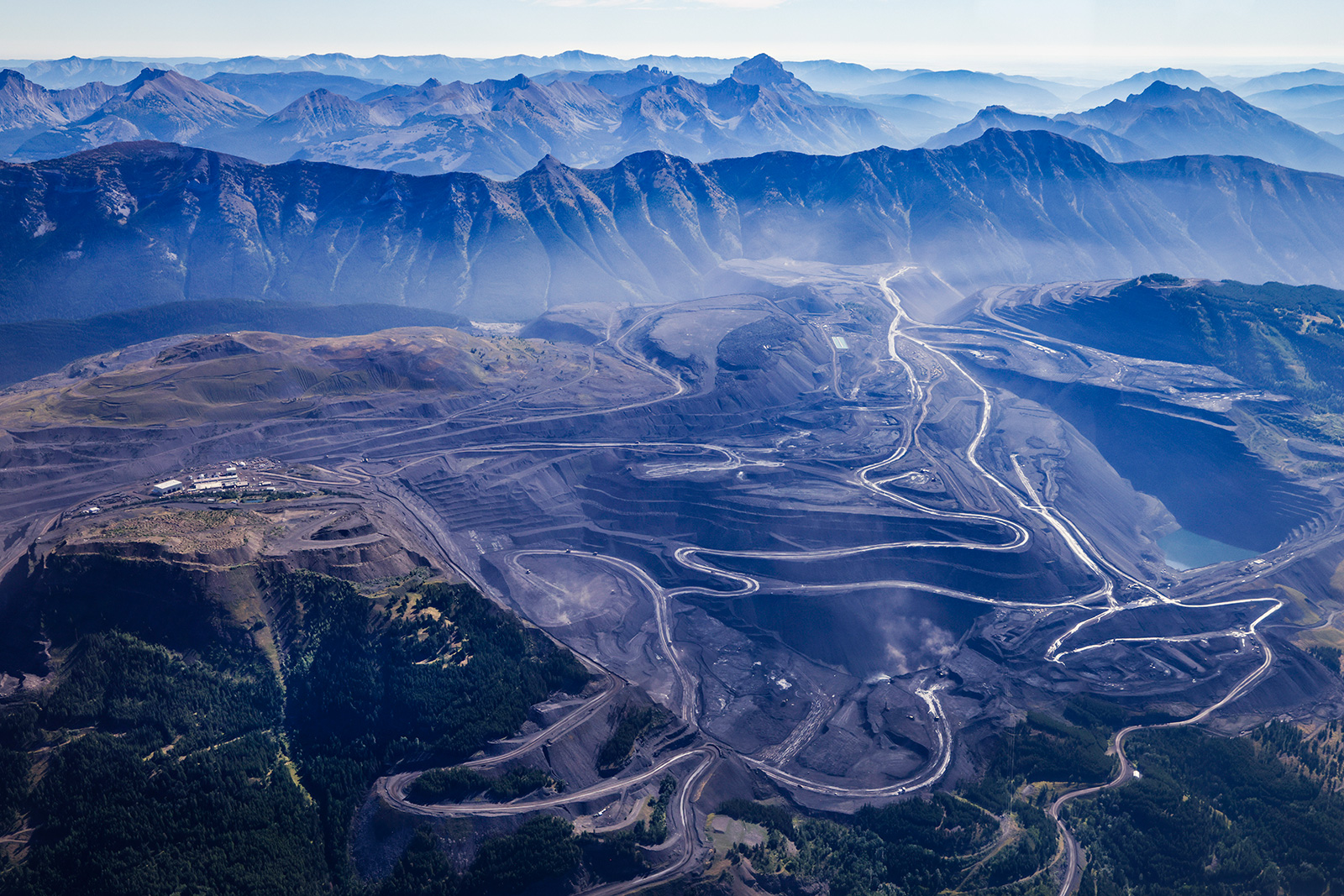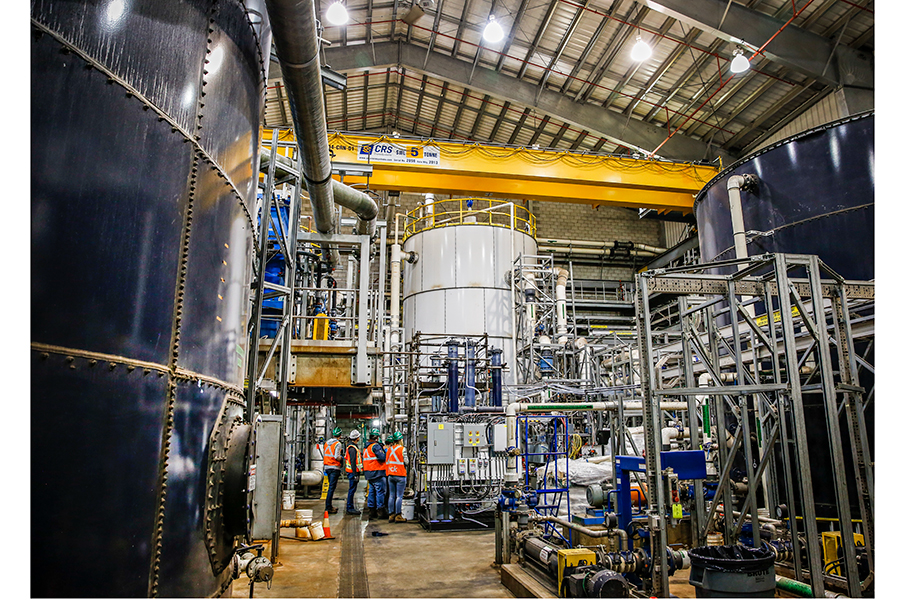Report Pegs Cost to Reverse Elk-Kootenai Mining Contaminant Concentrations at $4.7B
Selenium concentrations from the Teck-owned mines consistently breach both B.C. and Montana water quality standards; nonprofit study says cost is three times more than what regulators require in reclamation bonds
By Tristan Scott
Concentrations of mining contaminants leaching into the Elk-Kootenai River watershed from piles of waste rock generated by coal mining operations in British Columbia are so elevated that it will cost $4.7 billion and six decades of treatment to reverse them, according to a new report commissioned by the nonprofit environmental group Wildsight.
The recent cost estimates are about three times the amount the provincial government has required the mining company responsible for the contamination, Teck Resources Limited, to set aside in reclamation security bonds. The report, which was completed by a third-party consulting firm, Burgess Environmental Ltd, calculates what it will cost to implement Teck’s current plan to build water treatment plants and operate them for 60 years. The $4.7 billion price tag translates to $6.4 billion CAD.
Simon Wiebe, mining policy and impacts researcher at Wildsight, said the independent report’s findings are troubling because the cost estimates far exceed what Teck’s reclamation security is set at, “meaning they’ve severely underplayed the problem and B.C. taxpayers stand to foot a multi-billion-dollar bill if anything goes wrong.”
A reclamation security is a financial assurance, often referred to as a bond, that mining companies must provide to the province to cover environmental reclamation and remediation costs in case of emergency. It is designed to ensure the financial burden associated with clean-up costs falls on industry rather than taxpayers.
A spokesperson for Teck, which operates four steelmaking coal mines in the Elk Valley near where the U.S.-Canada border meets Montana, said the estimates Wildsight published are “inaccurate and inconsistent with calculations made under B.C. government policy.”
“Teck meets all current bonding requirements as set out by the provincial government policy, and we are committed to meeting all reclamation obligations at no cost to government or taxpayers,” according to Chris Stannell, public relations manager for Teck. “Teck will have $1.9 billion for the Elk Valley operations, as per the requirements and calculations under the B.C. Government policy. We have a proven track record of successfully reclaiming mine operations in B.C. and beyond and we are committed to protecting water quality in the Elk Valley.”
Concerns over mining contaminants in the Elk-Kootenai River watershed have been intensifying for years, particularly as concentrations of selenium consistently breach both B.C.’s and Montana’s water quality standards. According to Wildsight, selenium concentrations have more than quadrupled in the region in the past four decades, with levels regularly exceeding those considered safe for aquatic life and human health. The watershed includes communities such as Fernie, B.C., as well as Lake Koocanusa on the U.S.-Canada border, and the Kootenai River flowing through Montana and Idaho.
After years of stalled talks, Canada, the U.S. and a coalition of Indigenous governments in B.C., Montana and Idaho, including the Ktunaxa Nation, Confederated Salish and Kootenai Tribes and Kootenai Tribes of Idaho, on March 11 announced they’ve agreed to refer the selenium pollution problem to the International Joint Commission (IJC), a neutral third party which is now tasked with investigating and recommending solutions.
For its part, Teck points to its internal water quality data downstream of its treatment plants as evidence that selenium elevations are stabilizing. Teck has constructed four water treatment facilities with capacity to treat 77.5 million liters of water per day, “a four-fold increase from treatment capacity in 2020.
“We have invested $1.4 billion so far in water quality with plans to invest a further $150 million to $250 million by the end of 2024,” Stannell said in a statement.
However, the U.S. Geological Survey (USGS) recently published a report revealing that selenium and nitrates in the Elk River have increased by 581% and 784%, respectively, signaling unprecedented increases of the pollutants in the watershed.
Still, Stannell said the Wildsight report overstates ongoing water treatment operating costs by between 50% and 60%.

According to the report’s author, Gordon J. Johnson, president of Burgess Environmental, the annual costs for operation and maintenance of the water treatment facilities “are based on my experience and judgment” and that “information regarding Teck’s costs for operating and maintaining these facilities was specifically requested from Teck, and was not provided.”
The report comes as Teck prepares to sell a majority stake of its Elk Valley coal mines to Swiss mining giant Glencore, which has publicly declared its intention to spin off its coal assets within two years. The Canadian government is currently reviewing the proposed sale under the Investment Canada Act.
“With respect to the closing of the sale of a majority interest of Teck’s steelmaking coal business to Glencore,” Stannell said, company officials “expect the closing to occur no later than the third quarter of 2024.”
“We hope that both Glencore and the Canadian government will pay close attention to this report as they consider the sale, to ensure accountability for the selenium crisis is maintained throughout the transfer of ownership,” Wiebe said. “This is already an international environmental disaster, and it could still worsen.”